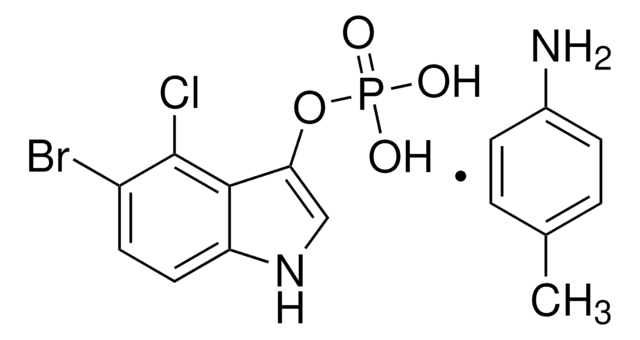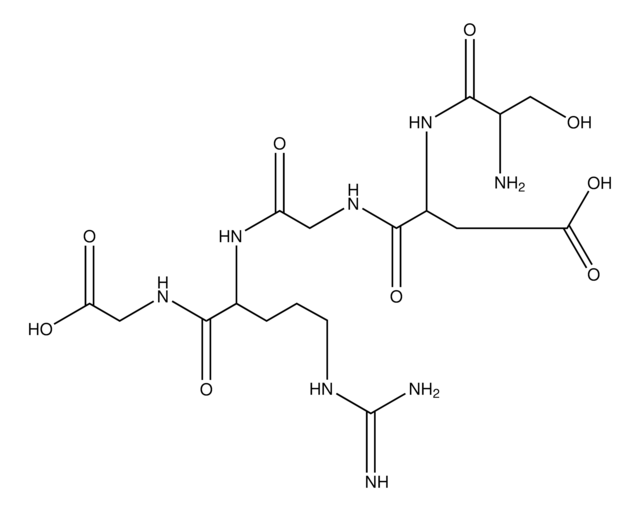B1911
BCIP®/NBT
alkaline phosphatase substrate, chromogenic, liquid
Synonym(s):
5-bromo-4-chloro-3-indolyl-phosphate / Nitro blue tetrazolium chloride solution, BCIP/NBT Alkaline Phosphatase Substrate solution
About This Item
Recommended Products
product name
BCIP®/NBT Liquid Substrate System, ready to use solution
Quality Level
form
liquid
storage temp.
2-8°C
Application
- for staining alkaline phosphatase(ALP) in bone marrow stromal cells
- as a substrate in western blot detection of matrix metalloproteinase-2 specific antibody
- as a substrate for streptavidin-alkaline phosphatase in the enzyme-linked immunospot (ELISpot) assays
Caution
Legal Information
Storage Class Code
12 - Non Combustible Liquids
WGK
WGK 1
Flash Point(F)
Not applicable
Flash Point(C)
Not applicable
Certificates of Analysis (COA)
Search for Certificates of Analysis (COA) by entering the products Lot/Batch Number. Lot and Batch Numbers can be found on a product’s label following the words ‘Lot’ or ‘Batch’.
Already Own This Product?
Find documentation for the products that you have recently purchased in the Document Library.
Customers Also Viewed
Articles
Nitroblue Tetrazolium (NBT) is used with the alkaline phosphatase substrate 5-Bromo- 4-Chloro-3-Indolyl Phosphate (BCIP) in western blotting and immunohistological staining procedures. These substrate systems produce an insoluble NBT diformazan end product that is blue to purple in color and can be observed visually.
Protocols
5-bromo-4-chloro-3-indolyl phosphate (BCIP)/nitro blue tetrazolium (NBT) is an ideal insoluble substrate for use with alkaline phosphatase. This system produces a blue-purple product. The intense color can be observed visually, is very stable, and will not fade upon exposure to light.
Our team of scientists has experience in all areas of research including Life Science, Material Science, Chemical Synthesis, Chromatography, Analytical and many others.
Contact Technical Service





